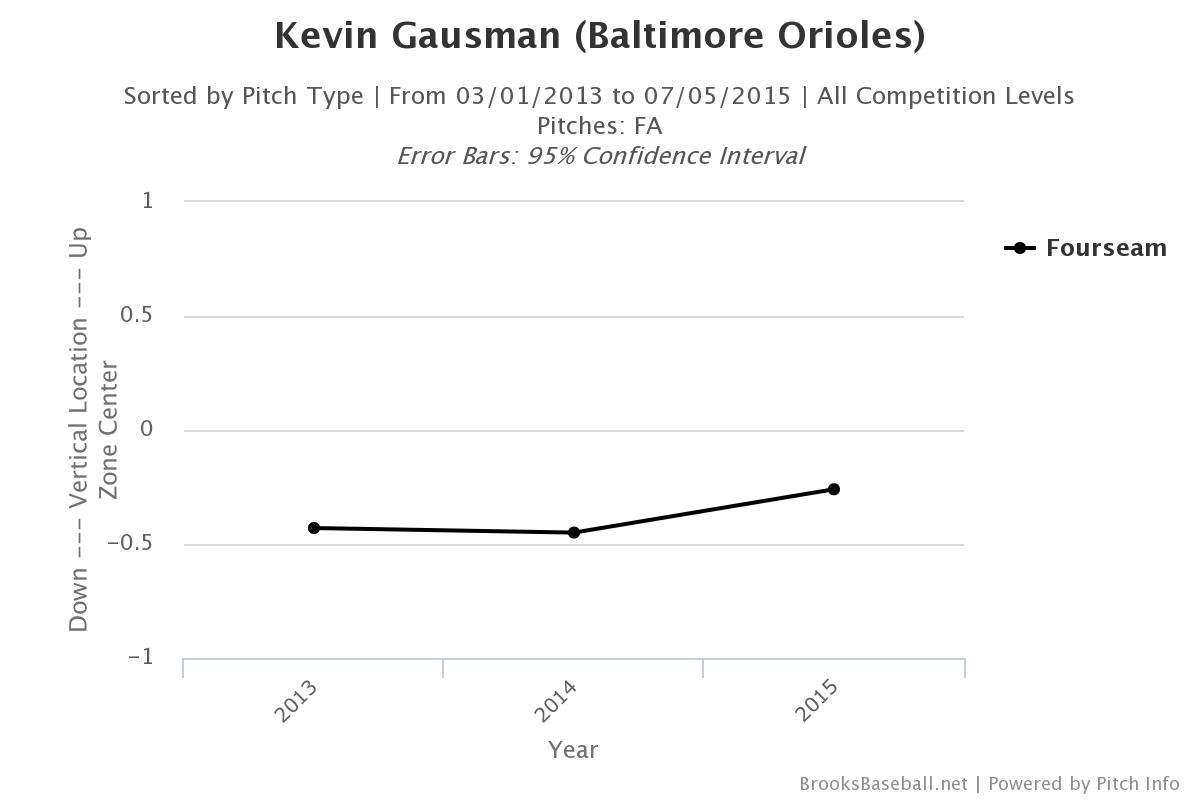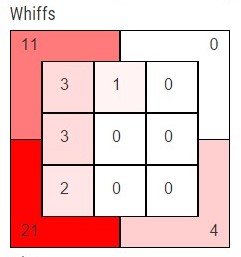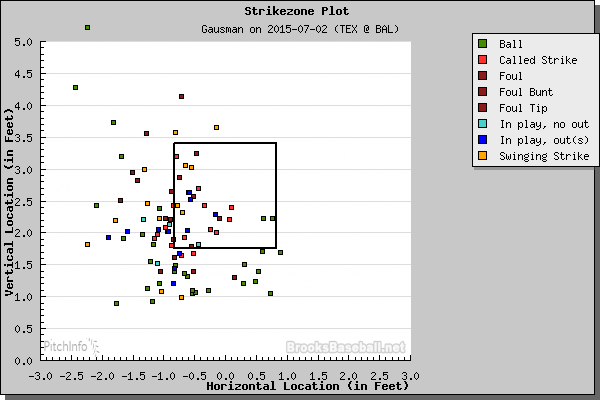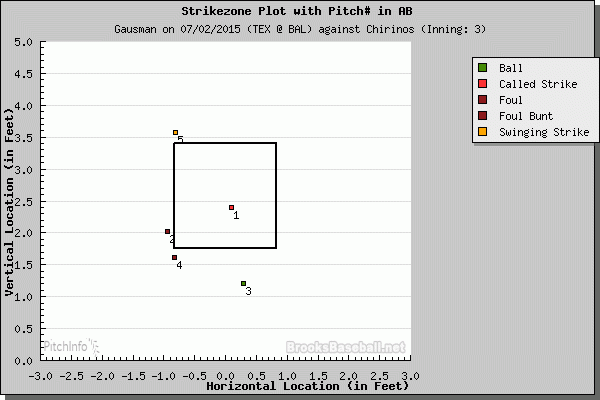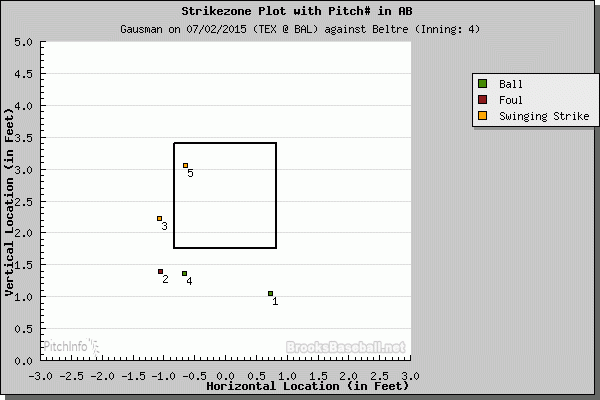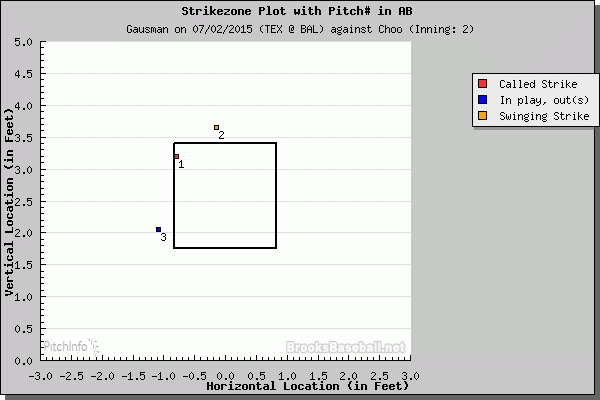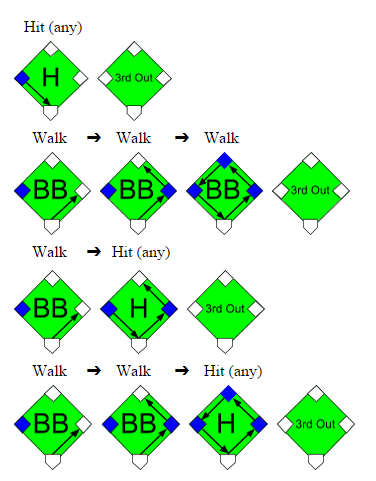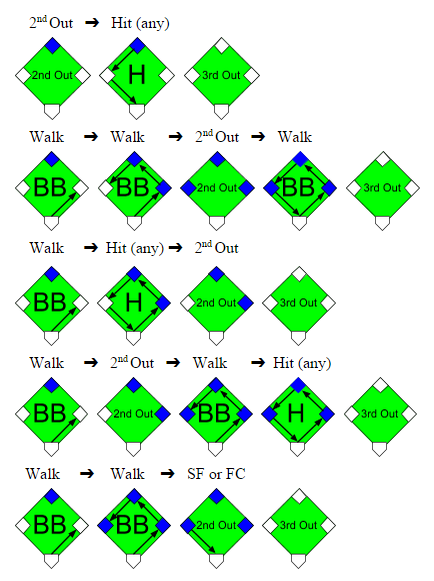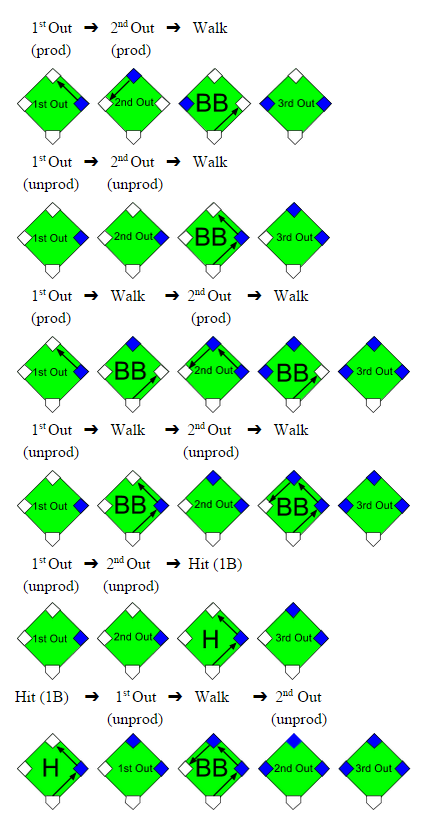Re-examining Top NL Outfield Prospects of 2015
Earlier this year, Alex Chamberlain of FanGraphs took a look at the top NL outfield prospects for the 2015 season. On this list of five outfielders, three of them have had significant time in the big leagues: Joc Pederson, Jorge Soler, and Randal Grichuk. They were ranked 1, 2, and 5 respectively prior to the season (Andrew Lambo and Eury Perez were ranked 3 and 4 but due to both playing less than 25 games, I did not include them in my analysis). The purpose of my writing today is to analyze these three outfielders and see if the preseason rankings has translated to the regular season. To understand if the rankings hold true, I will compare how each player has hit to this point in the season as well as their ability to help their team on defense.
Offensive Analysis
Using simply batting average as a definitive metric for determining which player is succeeding is especially tough considering the snapshot is only the first half of the 2015 season. That being said I think it is important to look at simple batting average to see if there is any outliers when comparing it to BABIP. In terms of batting average, Randal Grichuk is leading the way with a .277 average, followed by Soler and Pederson at .260 and .230 respectively. While this is a good baseline, comparing it to BABIP and % of hard hit balls identify if these averages are sustainable or unsustainable over the course of a season.
Pederson has a BABIP below the league average at .282, while Soler and Grichuk have BABIP almost 80 points higher than the league average. One of the factors that could be contributing to Pederson’s significantly lower average is simply being unlucky. In terms of Hard Hit%, Pederson is tops of the three with 41.5% of the balls he makes contact with being classified as hard hit. Soler and Grichuk have a 38.6% and 39.2% Hard Hit%. Another factor to consider is K%, but this is somewhat of a moot point considering that each outfielder has a K% within one point of 30%, nearly 12% above league average. This is to be expected of young players who are adjusting to big-league pitching and have a large amount of raw power. These percentages indicate that Pederson’s average should not be nearly as low as compared to the other two and would be considered an outlier and his .230 average is not indicative of how he is hitting overall. But it stands to reason that both Soler and Grichuk could see a regression in average if their BABIP falls towards league average.
Another factor that is important to look at when ranking these three budding All-Stars is their raw power. Hitting for average is important but in today’s game it is much harder to string together multiple hits, so being able to drive the ball in gaps or over the walls is a premium quality in a young player. Isolated Power is a great metric to look at when evaluating the raw power a player is displaying because it takes out the batting average variable out of Slugging %. Grichuk and Pederson have the exact same ISO at .257 while Soler’s is much lower at .128, just below the league average of .135. What this metric means is that Soler’s actual slugging% is somewhat inflated by his average. If his average falls, which would be due to a decline BABIP, his slugging% will suffer. It seems that even if Grichuk’s BABIP slumps he will continue to make an impact at the plate in terms of slugging% since his ISO is over 120 points higher than Soler.
To wrap up the offensive portion of my analysis, I would rank the three rookie outfielders 1) Pederson. This is based on the fact he has made a huge impact on the Dodger’s lineup (20 HR, 40 RBIs) although he has been hampered by an unlucky BABIP. 2) Grichuk. Due to the higher ISO than Soler against major league pitching. Grichuk has not only produced more this year than Soler but he projects to continue to have an impact on his team through his higher ISO even if his batting average drops. 3) Soler, is ranked third because the high BABIP and lower ISO make him less appealing throughout the course of the long MLB season.
| Average | BABIP | Hard% | ISO | K% | |
| Pederson | 0.230 | 0.282 | 41.5 | 0.257 | 29.2 |
| Grichuk | 0.277 | 0.374 | 39.2 | 0.257 | 30.4 |
| Soler | 0.260 | 0.376 | 28.6 | 0.128 | 31.8 |
| League Avg. | 0.256 | 0.296 | 0.135 | 17.9 |
Defensive Analysis
Defensive metrics also help determine which outfielder is helping save runs for their team which in turn improves the chance of winning a ball game. Revised Zone Rating or RZR is a good indicator of how well a player has been able to make plays in their fielding zone. In terms of RZR, Grichuk is the low man on the totem pole with .902 RZR. Pederson is tops in the group with .926 and Soler in the middle with .916. While RZR is a helpful stat it does not tell the full story of which outfielder is saving the most runs for his team.
DRS or the total defensive run saved helps give an idea of how many runs a fielder has saved above the average player. In terms of DRS, Grichuk has saved 6 runs above average even though he had the lowest RZR. Whereas Pederson has saved 1 run and Soler has saved 0 runs even though both have more outfield assist with than Grichuk (4 each vs. 1). Soler’s low DRS can be attributed to the fact on balls where Soler has between a 60-90% chance of making a play, he has only made the play 66.7% of the time compared to Grichuk and Pederson who have made those same plays 100% of the time.
In terms of defense, I would rank Grichuk number one due to his high DRS. Since saving runs is vital to a team’s success. Pederson would rank second and Soler would be third.
| DRS | RZR | Assist | |
| Pederson | 1 | 0.926 | 4 |
| Grichuk | 6 | 0.902 | 1 |
| Soler | 0 | 0.916 | 4 |
Conclusion
To wrap up my analysis, I think it is important to look at total WAR when evaluating players. Especially when breaking down these three young outfielders. I think it is clear that to this point in their 2015 seasons, Jorge Soler would be ranked third of the three due to the fact that his WAR is only .4 and he lags Grichuk and Pederson in almost every metric I have discussed. Grichuk’s WAR of 1.9 places him second. Even though he saves more runs than Pederson with his glove, the offensive impact Pederson has made even with his .230 batting average is extremely impressive. With 20 home runs at the All-Star break and a WAR of 3.3 Pederson would have to be ranked as still the top NL rookie outfielder that was ranked in the preseason.
| WAR | |
| Pederson | 3.3 |
| Grichuk | 1.9 |
| Soler | 0.4 |





